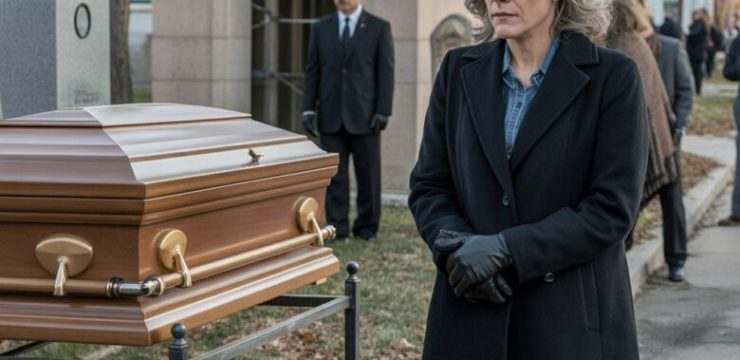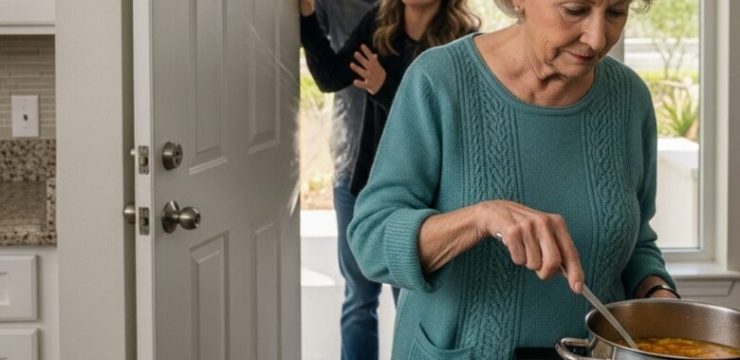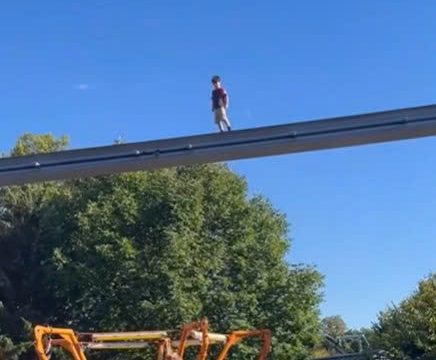Exploring older homes is like stepping into a time capsule, filled with fascinating features and design elements that often defy modern expectations. Among these quirks, one particularly intriguing detail stands out: the upside-down baluster. This inverted spindle, positioned among its properly aligned counterparts, is enough to make anyone pause and wonder. Is it just a mistake by the carpenter, or does it hold a deeper, more symbolic meaning?

A Deeper Intent Behind Upside-Down Balusters
While an upside-down baluster may initially appear to be an error, historical and cultural contexts suggest it could be a deliberate design choice. In various traditions, these inverted balusters were believed to symbolize protection. They were thought to ward off evil spirits or bring good fortune to those living in the home. In Scottish folklore, for example, such features are linked to subtle acts of rebellion, like covert support for historical figures such as Bonnie Prince Charlie.
Beyond superstition, these design choices often reflected the humility of the craftsmen. In some historic buildings, deliberate imperfections were introduced as a nod to the idea that only divine creations could be perfect. By adding these “flaws,” builders acknowledged human fallibility while paying homage to higher powers. This tradition can still be seen in structures like the South Dakota and Wyoming State Capitols, where subtle design inconsistencies were purposefully included to preserve this symbolic practice.
Modern Perspectives on Upside-Down Balusters
In today’s world, upside-down balusters are often viewed with curiosity and intrigue. Rather than being dismissed as mistakes, they are celebrated as artifacts of creativity, cultural storytelling, and the layered histories of older homes. Their presence invites us to ponder the intentions of the original builders and the symbolic meanings they might have held.
These architectural details are far from being insignificant. Instead, they stand as testaments to the thoughtfulness and individuality of past generations, adding character and charm to the homes that feature them. Their stories remind us that design is more than just aesthetics—it’s a form of communication, imbued with meaning and intention.
Unique Staircase Features in Older Homes
Upside-down balusters aren’t the only distinctive elements found in older homes. Historic staircases often boast other fascinating features that blend practicality with charm. Two such examples are dust corners and stair rods, both of which highlight the innovative spirit of past generations.
Dust Corners: From Practical to Decorative
Dust corners first emerged in the late 19th century as practical solutions to a common household problem—cleaning the hard-to-reach spaces in staircase corners. These small metal guards were designed to block dust and debris from accumulating, making it easier to maintain clean and tidy stairs.
Over time, dust corners transitioned from purely functional items to decorative accents. Crafted from materials like brass or bronze, they added an elegant touch to wooden staircases. Today, these pieces retain their vintage charm and can even be used to enhance other awkward spaces, such as the corners between walls and fireplace moldings.
For those looking to add dust corners to their homes, options are readily available:
- Specialty Stores: Retailers like House of Antique Hardware carry authentic vintage designs that capture the charm of the past.
- Online Platforms: Websites like Amazon and Etsy offer a wide variety of styles, from classic to whimsical, ensuring there’s something to suit every décor preference.
Stair Rods: Bridging Tradition and Style
Stair rods were originally created to hold runner carpets securely in place on wooden staircases. While modern carpet installation methods have made them less essential, their aesthetic appeal remains timeless.
These decorative accessories, often made from materials like brass or wrought iron, evoke vintage sophistication and add a touch of character to both traditional and contemporary interiors. Today, stair rods are primarily used for their visual impact, lending an air of elegance to staircases in homes that embrace classic design elements.
To find stair rods that match your home’s style:
- Specialty Hardware Stores: These stores often cater to period homes and stock high-quality stair rods designed to enhance traditional interiors.
- Online Retailers: Platforms like Wayfair and Amazon offer a wide selection of stair rods, ranging from ornate traditional designs to sleek modern interpretations.
The Stories Behind Architectural Details
Whether it’s an upside-down baluster, a dust corner, or a decorative stair rod, these architectural details tell rich stories about the past. They remind us of the ingenuity and creativity of previous generations, offering a glimpse into the lives of those who built and lived in these homes.
Far from being mere quirks, these elements are windows into history. They reveal the symbolic meanings, practical innovations, and artistic choices that shaped the spaces we now call home. By preserving and appreciating these details, we honor the legacy of the craftsmen who came before us while adding a sense of timeless charm to our modern spaces.
The next time you encounter an unusual architectural feature, take a moment to consider its history and significance. These details may seem small, but they carry with them the rich narratives of the people who imagined, designed, and built them. In doing so, you connect with the past and celebrate the enduring creativity that continues to inspire us today.





